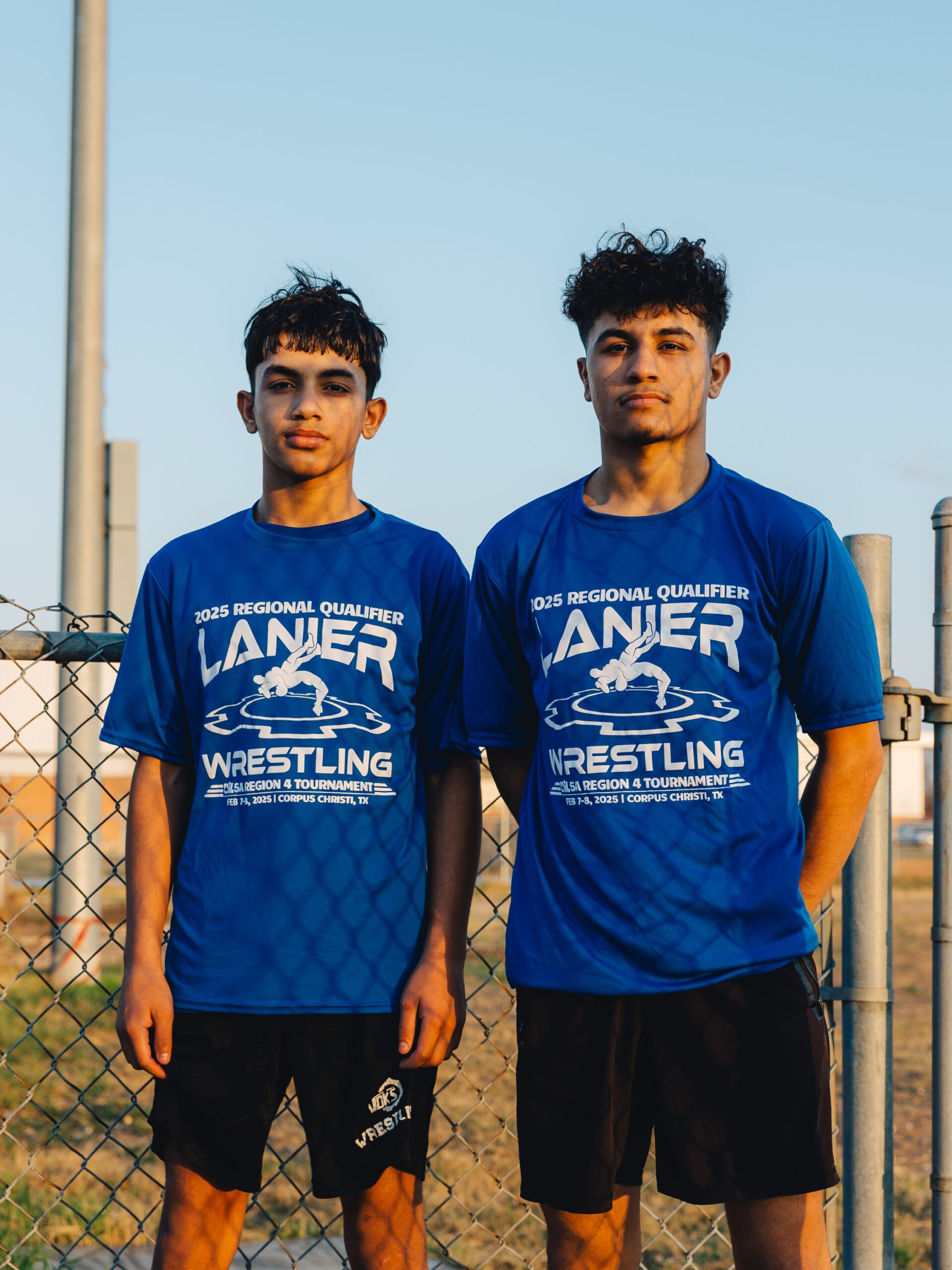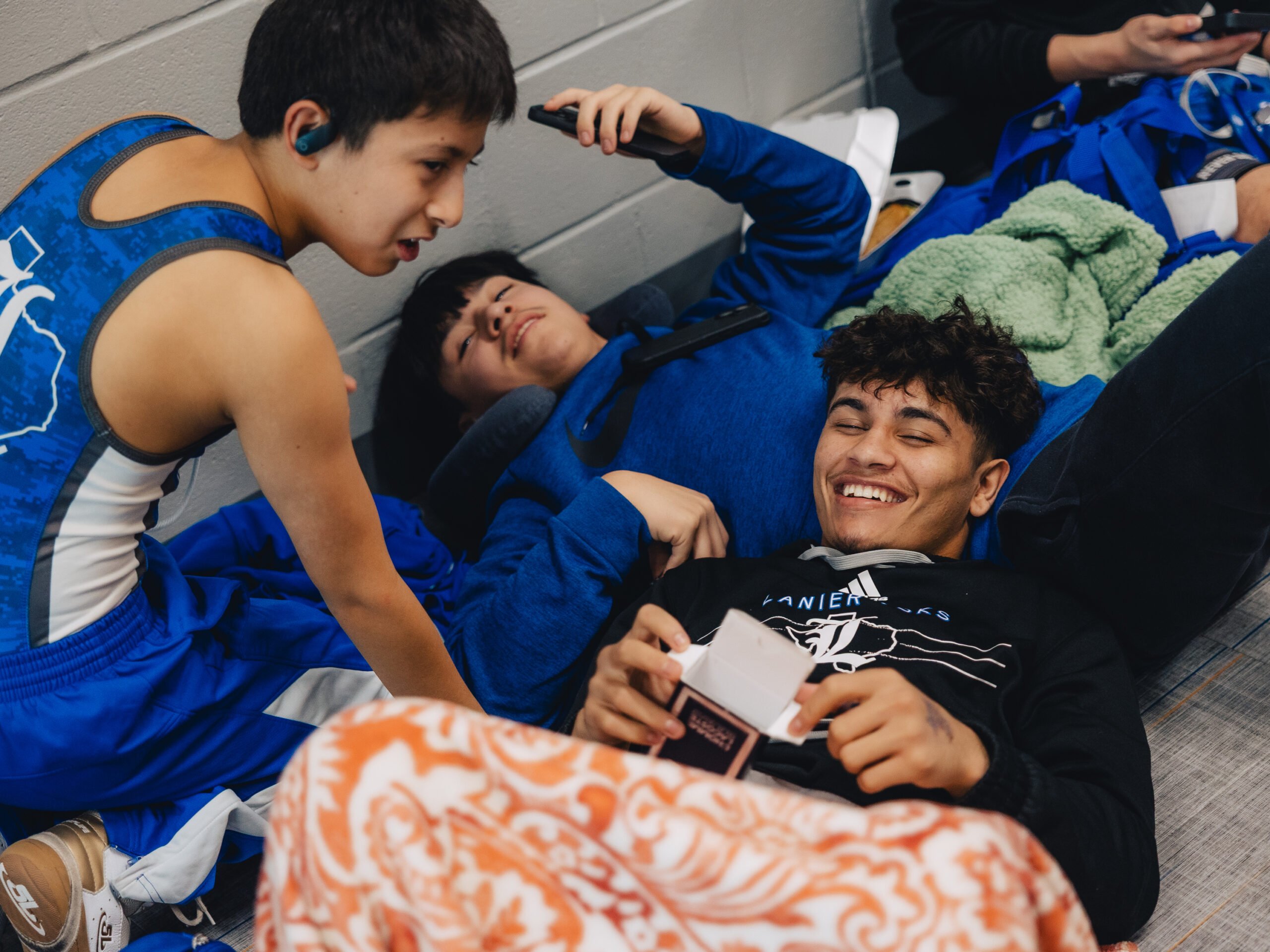Elham Jalak and Mustafa Pashtoon met for the first time on a flight from Kabul in February 2016. Jalak was 6 years old, Pashtoon just 8. Their fathers had known each other in the Afghan Army, and their families came to the United States through the Special Immigrant Visa program, which has helped resettle Afghan citizens who worked with the United States during the war. In America, their dads hoped to find better jobs and education for their children.
It was a big plane, an Emirates double-decker, and the two boys sat next to each other. They didn’t know what to expect once they landed, aside from what they had seen in the movies, and neither spoke English. “Not even one word,” Pashtoon later told the Texas Observer. “I didn’t even know how to write my name.” After the 16-hour flight to Houston, they flew to San Antonio, their new home, where they settled in a northwest neighborhood known for its diverse immigrant communities. A couple years later, their families relocated to San Antonio’s West Side.
The pair started playing sports. “I played soccer, cross-country, track, golf, tennis, soccer, and then I did football and basketball,” Jalak proudly recounted. “We played together.” They sometimes speak about their experiences unemotionally, as if every teenager were forced to flee a war-torn country. Occasionally, they break into Pashto with each other, then switch back to English.
When I first met them at an away junior varsity tournament at Legacy of Educational Excellence (LEE) High School, they were wrestling. In the gym bleachers, Jalak and Pashtoon, now 15 and 17, were waiting for their next matches along with Saifullah Gul, another Afghan immigrant. Altogether, they were among five Afghan wrestlers on Sidney Lanier High School’s team at that point in the season, about a quarter of the entire team.
Traditional Afghan wrestling—known as Pehlwani—is a popular pastime for boys in the south-central Asian nation, so many Afghan refugees find a natural home on high school wrestling teams in America. This phenomenon is prevalent in California and Virginia, the states with the largest populations of Afghan immigrants. In Texas, the state with the third-largest concentration, it’s pretty much happening in one place: San Antonio’s West Side, and thanks to one person: Faridullah “Ferrari” Samsor.

Samsor, now 18, came to the United States in October 2019 at 12 years old. On his first day in San Antonio, he met Gul at a local park. The next day, they met up again to wrestle. His father, who had also been in the Afghan Army, took a job as a taxi driver, one of several occupations that Afghan immigrants often fall into. Refugees learn quickly that to survive, you just need the three C’s: a cell phone, a computer, and a car, according to Jean Sherrill, assistant director at San Antonio’s Center for Refugee Services.
Still speaking very little English, Samsor showed up at LEE High School in north San Antonio in August 2021. Right away, he tried to join the wrestling program but didn’t weigh enough. He came back his sophomore year, promptly broke a finger, and was out for the season, but not before he earned the nickname “Ferrari,” because a coach couldn’t pronounce his name. Samsor thought the name was cool and brought it with him to Lanier when his family and Gul’s, like Jalak and Pashtoon’s, moved to the West Side in 2023.
Samsor started training at Takedowncity, a gym run by eight-time jiu-jitsu world champion Danielle Walker, then approached the school’s wrestling coach, Steven Cruz. “He also said he was going to get all of his friends to join the team,” Cruz recalls, “and he did.”
Cruz didn’t realize that Samsor had already started recruiting. That summer, Samsor had started showing Pashtoon, Jalak, and the other Afghan boys from the neighborhood the moves he’d learned at the gym. “’Cause we’re Afghan, so sometimes we wrestle each other,” said Pashtoon. “He was like, ‘This is how you guys get a pin,’ and we’re like, ‘What is a pin?’” The rules weren’t quite the same as back home, but Samsor was convincing. That year, one other Afghan boy joined him. The next year, there would be eight, including Samsor’s younger brother, Sahil, one of his six siblings.
Like other high schools in San Antonio, Lanier’s wrestling program is still in its infancy. In some parts of Texas, teams adopted wrestling as far back as 1998, but San Antonio schools have been slower to embrace it. “You’re in Texas, but Texas is football,” explained Kristen Lara, the Lanier wrestling coach who helped establish the team along with Cruz.
HE’LL BE GONE, BUT HIS RECRUITING EFFORTS WILL HAVE A LASTING IMPACT AT LANIER.
Three years ago, Lanier tried to set up a powerlifting team. The district said no, but that they could have a wrestling team. “We didn’t ask for a wrestling team,” said Cruz, an El Paso native who started coaching football at Lanier in 2019. But, now that they had one, they needed a head coach. Eventually, Cruz accepted the job, and they brought in Lara as the assistant. Neither had any wrestling experience, but Lara had been training in jiu-jitsu for three years, and there were plenty of YouTube videos to help.
Cruz first noticed Afghan students on the West Side about five years ago. The population of Afghan immigrants in the States has ballooned over the past 15 years, from around 50,000 in 2010 to 200,000 in 2025. More than half arrived after the 2021 fall of Kabul, and these refugees have overwhelmingly ended up in a handful of states: California, Virginia, Texas, Washington, and New York. Precise local numbers are hard to come by, but the Migration Policy Institute and nonprofits who support refugees have estimated there are 6,000 Afghan immigrants in San Antonio, as many as 15,000 in Houston, and several thousand each in Dallas, Fort Worth, Austin, and El Paso. As of February, an estimated 200,000 Afghans are still in limbo overseas after the Trump administration halted resettlement.
Across the country, Afghan children—mostly boys—are diving into American sports. Wrestling is popular partly because it’s similar to traditional Afghan wrestling, which involves more upper-body throws than the single and double-leg takedowns favored in American high-school wrestling but requires similar body control and mental toughness. “Where I [grew] up, we used to wrestle in the streets anywhere,” Samsor explains. “That’s the thing, like in Afghanistan, it’s like basically fighting anywhere.”

In California and Virginia, teams with significant numbers of Afghan wrestlers are more common than in Texas. That’s likely because, for the most part, the schools in Texas where they enroll don’t have wrestling programs. Lanier, which only has about 50 Afghan students total, is an outlier.
Cassiano Homes, the sprawling public housing community where Samsor’s family lives, takes up several blocks on the West Side a little over a mile from Lanier. Its symmetrical rows of red-roofed, two-story townhouses give it the feel of military barracks, aside from the fading murals on their walls, for which the neighborhood is celebrated. They reflect the area’s Mexican-American heritage, from Aztec gods to 1980s Chicano culture. San Antonio has one of the highest poverty rates among major cities in the United States, and, thanks in large part to the practice of redlining, it is still one of the nation’s most economically segregated cities. 78207, the zip code that includes the Westside, has a long history of neglect and is still the poorest part of the city.
Lanier, the high school that serves the area, was founded as a trade school (its mascot, the Voks—short for “vocational”—is a blue gearwheel) and is 97 percent Hispanic, though its valedictorian last year was an Afghan girl. Around the corner from the school, a mural depicting Hispanic soldiers in Vietnam reads “You Are Not Forgotten” and brings to mind the flood of refugees after the fall of Saigon. The school grounds, recently renovated, consist of a few dusty sports fields and an assortment of modern, atrium-filled brick buildings that resemble a mid-sized airport and clash with the surrounding neighborhood’s architecture.
Two days before the Regional Wrestling Tournament in February, the Lanier team was getting in a short practice after school, just to break a sweat. They practice in a hallway, around the corner from the cafeteria, on a narrow, rectangular strip less than half the size of a regulation mat. Samsor was visibly sweating through a gray shirt, with blue sweatpants tucked into his socks. Weighing under 132 pounds with a wet mop haircut, he’s not an imposing figure, but his confidence and all-consuming passion for wrestling have an inspirational effect on his teammates akin to Benny from the movie The Sandlot. With a lot of hard work—aside from a break or two to eat, shower, or pray, Samsor trains every weekday from around 3:30 to 11 p.m. and competes in tournaments on the weekends—he has come a long way in three years on the team. He won only two matches his first season, was knocked out at the district tournament his second, then made it to regionals in his third and final year, as a senior, with 31 wins and only 8 losses. His brother, Sahil, a freshman, would also be at the tournament as an alternate in case someone dropped out.

After practice, Cruz gathered the team at the edge of the mat, dressed in casual coach-wear: a polo shirt and shorts. They’d already made history, in his opinion. When he and Lara started the program, they had one girl make it to regionals. This year, they would be sending eight wrestlers, three as alternates. “We’ve beaten a lot of teams that we shouldn’t have beaten on paper, and we’ve been beaten by a lot of teams that shouldn’t have beaten us on paper,” he said. “But you don’t wrestle on paper, you wrestle on the mat.”
Walking to the field house, Samsor pointed out that they also have Afghan players on the soccer, baseball, and track teams. He slapped a student’s hand as they passed each other and said, “That guy’s Afghan. He’s on the basketball team. We’re taking over.” At weigh-ins, Samsor joked around with his teammates by putting his toe on the back of the scale to make them seem heavier. He made weight himself, but Sahil, who seemed nonplussed, had to lose seven pounds in the next day and a half. Cruz handed out blue Lanier t-shirts he’d ordered just for regionals, which had all their names on the back, and Samsor was quick to point out to his teammates that his name was on top.
Despite the jokes, there was tension in the air. The regionals would likely be Samsor’s last high school match, and it seemed to weigh on him even though he has ambitious plans for the future. Now that he’s 18, he can apply for citizenship. In the fall, he plans to go to college, to make his mother proud, but he also intends to keep training in boxing and jiu-jitsu and eventually become a UFC fighter. He’ll be gone, but his recruiting efforts will have a lasting impact at Lanier. Next school year, there should be at least five Afghan wrestlers on Lanier’s team again, including one new addition, Jalak’s brother, who will be a freshman. After weigh-ins, Ferrari and Sahil jumped in their father’s Toyota Highlander—not quite a Ferrari—and took off for another two hours of wrestling at Takedowncity.
On Friday morning, at the regional tournament in Corpus Christi, Cruz and Lara (who drives the bus to matches), both dressed in coach-professional—a polo shirt and slacks—were excited. Two of their three alternates, including Sahil, were going to compete. “Ready to go, coach!” Samsor said as they finished warming up. “You hydrate? Water? You good?” Cruz asked. “Your brother, is he good? Scared?” When the national anthem played, and the crowd stood at attention, Samsor didn’t move, leaning back against the bleachers with his hands in the pockets of his hoodie and his headphones over his ears. Then, the wrestling began.
If you’ve never been to a wrestling tournament, it can be overwhelming. A basketball court floor is covered from end to end with mats, which give off a strong smell of rubber and sweat, and the incessant squeaking of dozens of shoes is punctuated by whistle blasts and eruptions of clapping and hooting. It’s nearly impossible to tell who’s wrestling where without a very helpful wrestling app.

Samsor controlled most of his first match, against a wrestler from Buda that he’d beaten before, and won after the full three periods. During the long breaks between matches, he’d split his time, either making the rounds to chat with wrestlers he knows or lying down under his blanket and scrolling through social media. At one point, while in the hallway outside the gym with his teammates, watching a video of himself wrestling, one of his female wrestling friends walked over and pulled him away. “Just friends! Just friends, right?” yelled one of his teammates, as Samsor casually slipped him the middle finger on his way out.
Before his second match, Samsor was bouncing on his toes, looking nervous. He was about to face a wrestler from Edinburg named Gonzales, who was ranked fifth in the state and against whom Samsor had lost earlier in the season. With Sahil shouting advice to his brother in Pashto from the side, Samsor tried valiantly to score points by landing one of his favorite moves like the Big Mac or the Blast Double, but he spent most of the match fending off Gonzales’ strong leg game, struggling to get off of his back multiple times, until finally the referee called the match with 20 seconds remaining because Samsor was losing by 15 points.
When it was time for his next match, Samsor was nowhere to be seen. Cruz, looking worried, ran across the gym, out the doors, and a minute or so later came jogging back with Samsor, who had been hanging out with a girl in the hallway. Sahil threw him some headgear, and Samsor took his place on the center line across from a wrestler from Edcouch who was only seeded one place above him.
Within five seconds, Samsor was caught by a head-and-arm throw and ended up on his back. He recovered, got hold of the opponent’s leg, almost got back on top, then was thrown to his back again before being saved by the bell. He spent most of the second period trying to make something happen from on top: get a leg in, grab an ankle, a wrist, anything. Shortly into the third period, facing each other on their knees, Samsor was surprised again by a head-and-arm throw, but this time he didn’t recover and was pinned.
At the corner of the mat, Cruz looked disappointed as he rose from his chair. He believed that Samsor could have won the match. “That’s a tough loss,” he said. Once off the mat, Samsor squatted down behind the coaches’ chairs, dropped his head, lowered his eyes toward the ground, and stayed there, frozen in the moment.







